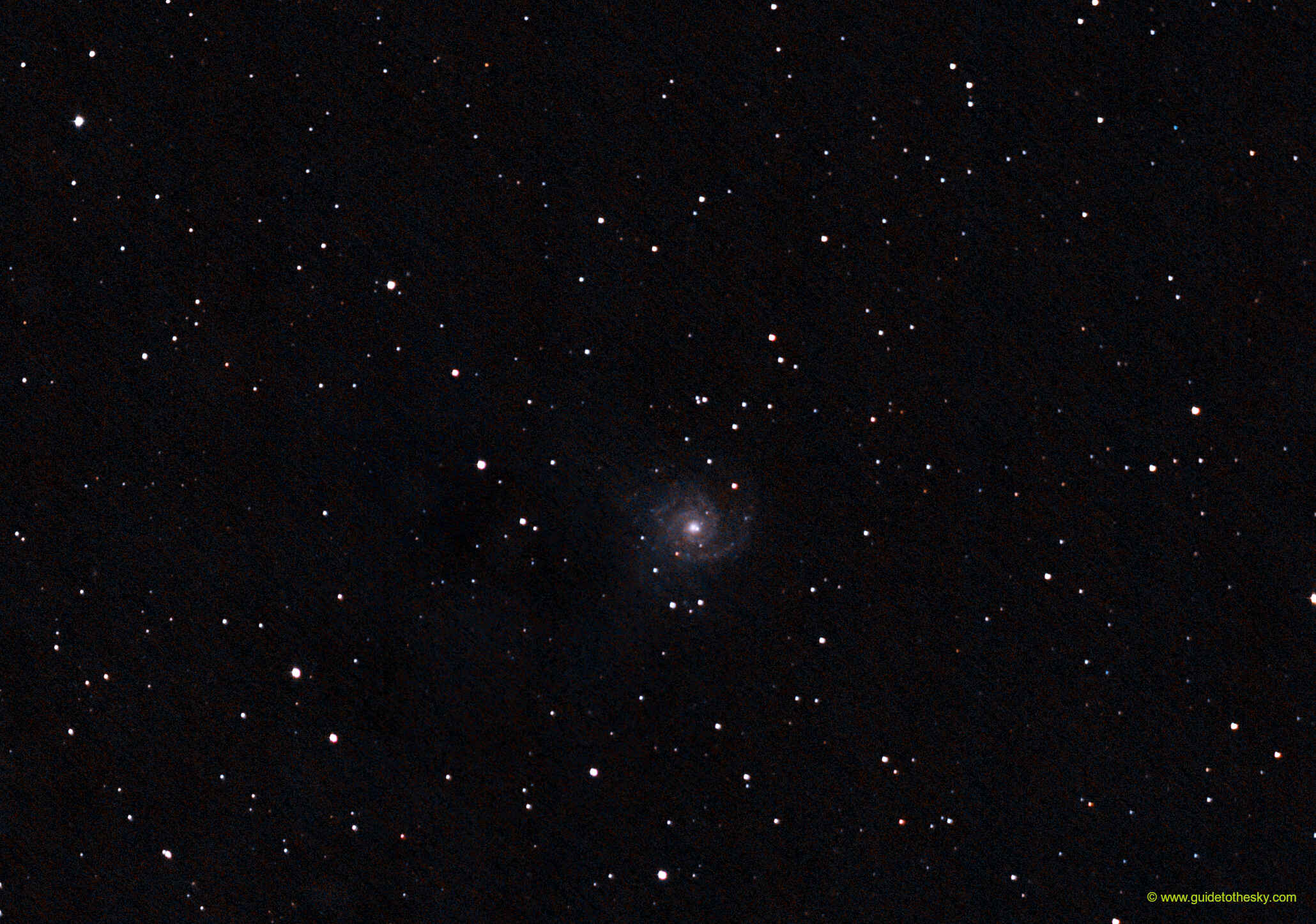Messier 74 - Pisces

M74 dista {{object[0].M74.mesDistances[0].dist }} {{ object[0].M74.mesDistances[0].unit }} de nosotros. Ya que M74 tiene una {{ object[0].M74.visualMagnitude }} de Magnitud visual, es un objeto que sí posee un núcleo luminoso, pero dificil, con baja luminosidad por unidad de superficie. Por ello requiere una noche muy oscura para su observación visual y un gran tiempo de exposición para obtener una imagen fotográfica.
M74 emite rayos X, y de hecho es un candidato a poseer un núcleo activo.
M74 - - en la IA
Messier 74 (M74), also known as the Phantom Galaxy, is a stunning spiral galaxy located approximately 32 million light-years away in the constellation Pisces. Here's a breakdown of key information about it:
Key Characteristics:
- Type: Grand design spiral galaxy (Sc) - This means it has well-defined, prominent spiral arms.
- Distance: About 32 million light-years from Earth.
- Diameter: Roughly 95,000 light-years across, slightly smaller than the Milky Way.
- Visual Magnitude: Around 9.4, making it a faint object to observe visually, requiring a good telescope and dark skies.
- Nickname: "Phantom Galaxy" - Due to its low surface brightness, it can be difficult to spot visually.
- Orientation: We see it nearly face-on, which allows us to appreciate its spiral structure.
Structure and Features:
- Spiral Arms: M74 boasts prominent and well-defined spiral arms, studded with bright blue star clusters, pinkish H II regions (areas of ionized hydrogen gas where new stars are forming), and dark dust lanes.
- Nuclear Region: Its central region appears relatively faint and featureless compared to the vibrant spiral arms.
- Supernovae: M74 has been the host of several observed supernovae, including:
- SN 2002ap (Type II) - A relatively bright supernova.
- SN 2003gd (Type IIP)
- SN 2013ej (Type II)
Observing M74:
- Challenges: Its low surface brightness makes it a challenging target for visual observers. Dark skies are essential.
- Equipment: Requires a telescope with a decent aperture (at least 8 inches or larger) to see details.
- Location: Located in the constellation Pisces, best viewed during autumn and winter.
- Tips: Look for a faint, diffuse glow. Using averted vision (looking slightly to the side of the object) can help. Long-exposure photography is excellent for capturing its spiral structure.
Scientific Significance:
- Studying Spiral Structure: M74 is an excellent subject for studying the formation and evolution of spiral galaxies. Its nearly face-on orientation allows astronomers to examine the structure of the arms in detail, including the distribution of stars, gas, and dust.
- Supernova Research: The supernovae observed in M74 provide valuable data for understanding stellar evolution and the physics of supernova explosions.
- Distance Indicator: The well-defined spiral arms and the presence of Cepheid variable stars can be used to help determine the galaxy's distance.
- JWST image: The James Webb Space Telescope took an image of this galaxy in July 2022 showing incredible details of the galactic structure.
In summary, Messier 74 is a beautiful and scientifically important spiral galaxy that poses a challenge to observe but offers a rewarding view for those with the right equipment and dark skies. The data gathered from this galaxy continue to reveal more about the Universe.
Más información sobre Messier 74 en NASA/IPAC.
Mapa alrededor de Messier 74
Otros identificadores de M74:
"TIC 405375557" ,"2MASS J01364173+1547008" ,"[CHP2004] J013641.7+154701" ,"Gaia DR3 2589380639673817728","2E 440" ,"2E 0134.0+1531" ,"87GB 013400.0+153119" ,"GB6 B0134+1531" ,"IRAS F01339+1532" ,"IRAS 01340+1532" ,"ISOSS J01366+1547" ,"LEDA 5974" ,"M 74" ,"MCG+03-05-011" ,"NGC 628" ,"TC 18" ,"UGC 1149" ,"Z 0134.0+1532" ,"Z 460-14" ,"[SLK2004] 223" ,"[VDD93] 8" ,"2MASX J01364177+1547004" ,"[M98c] 013400.7+153155" ,"UZC J013641.7+154659" ,"PSCz Q01340+1532" ,"HIPASS J0136+15" ,

